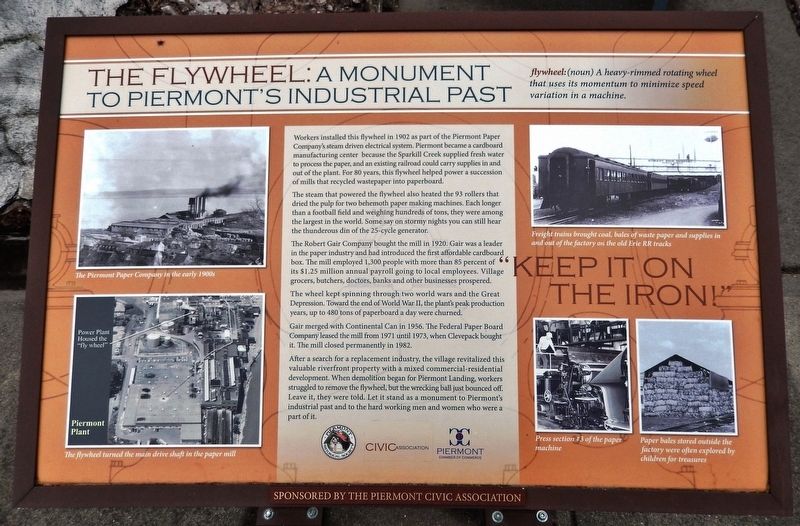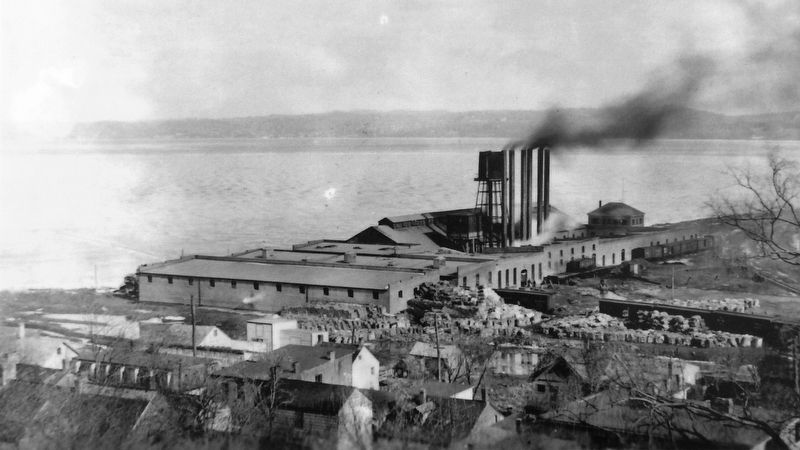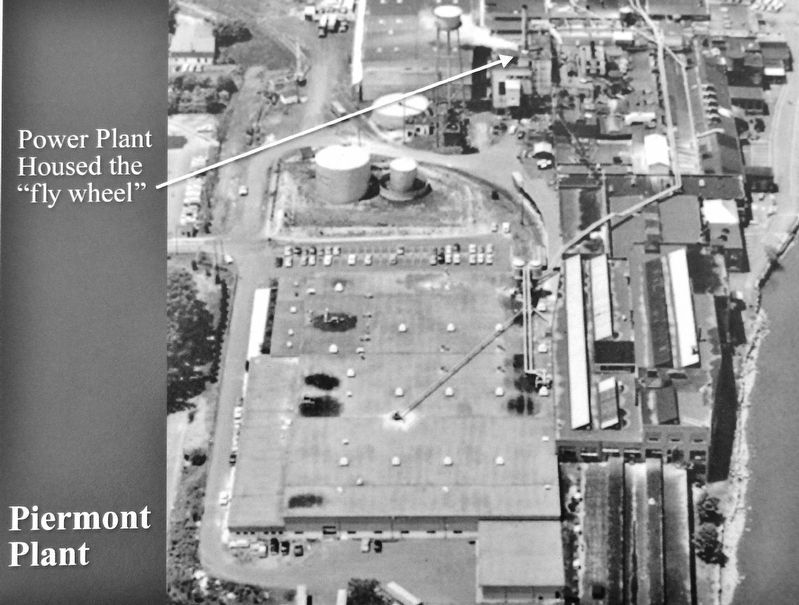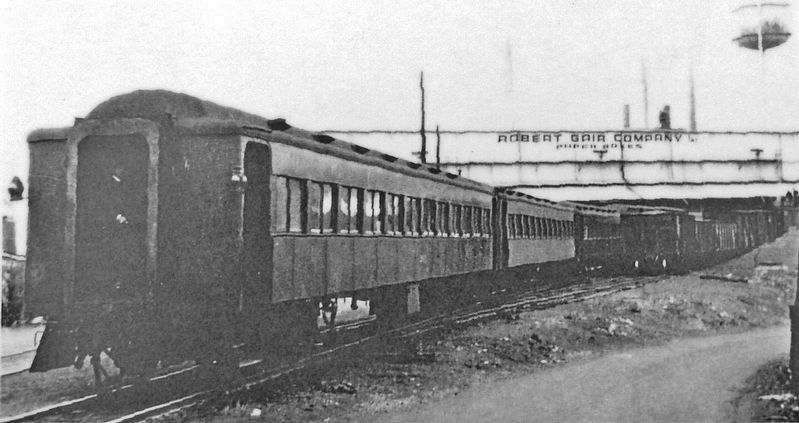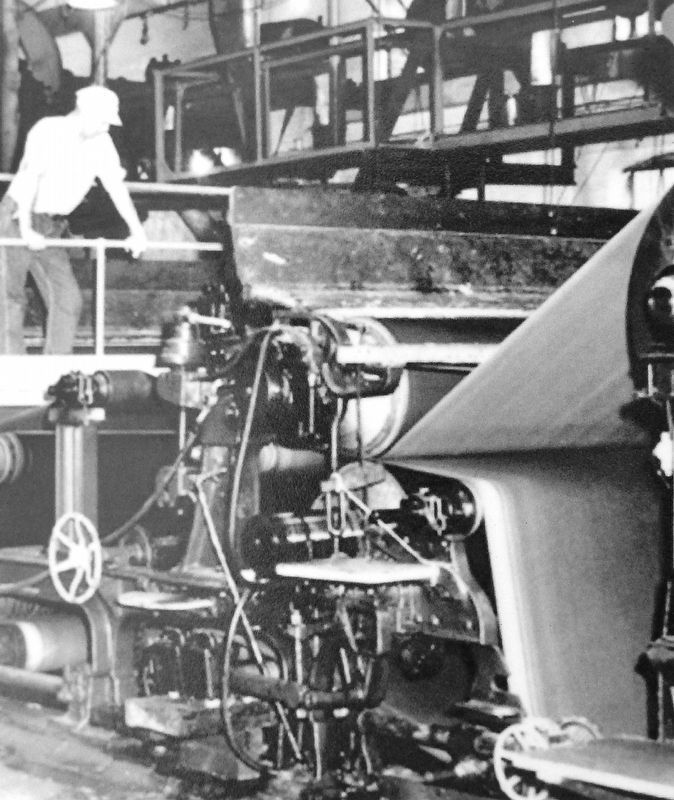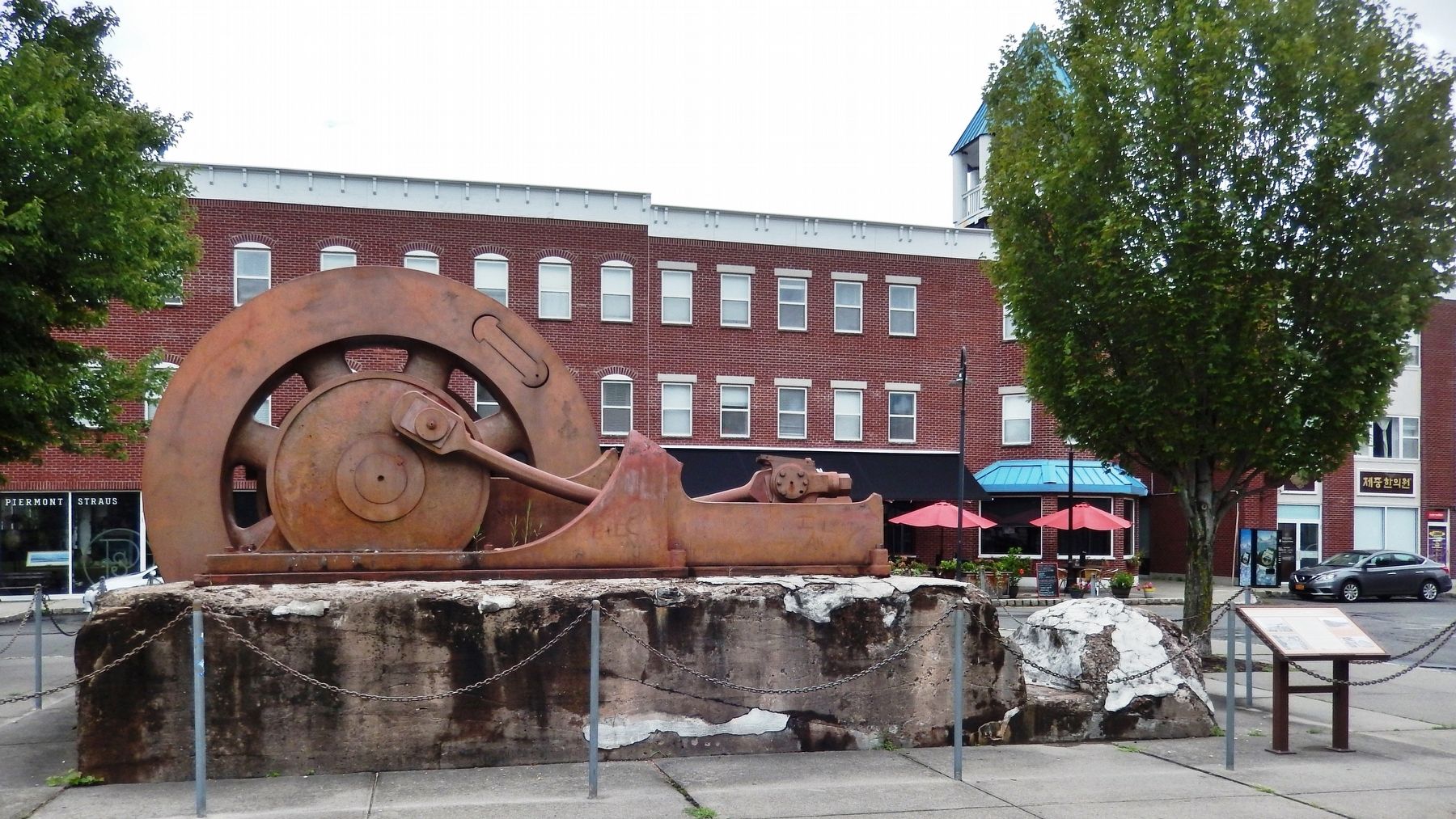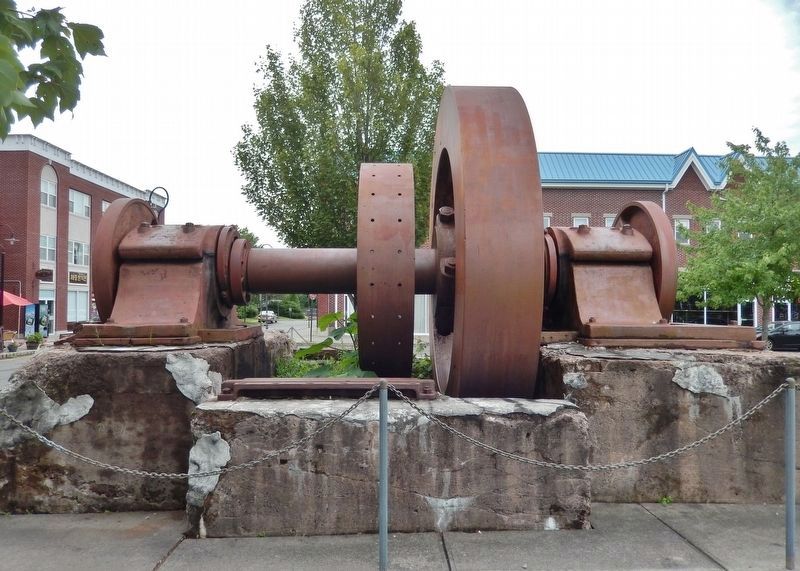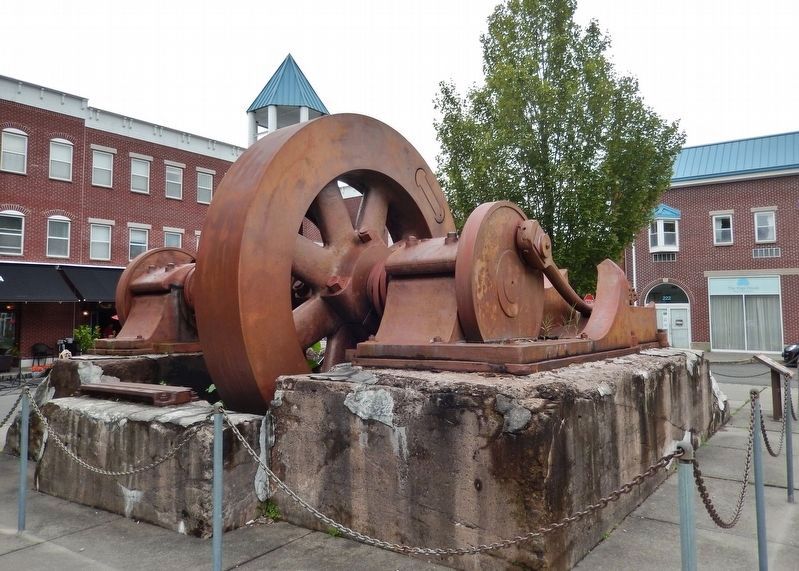Piermont in Rockland County, New York — The American Northeast (Mid-Atlantic)
The Flywheel: A Monument to Piermont's Industrial Past
Inscription.
flywheel: (noun) A heavy-rimmed rotating wheel that uses its momentum to minimize speed variation in a machine.
Workers installed this flywheel in 1902 as part of the Piermont Paper Company's steam driven electrical system. Piermont became a cardboard manufacturing center because the Sparkill Creek supplied fresh water to process the paper, and an existing railroad could carry supplies in and out of the plant. For 80 years, this flywheel helped power a succession of mills that recycled wastepaper into paperboard.
The steam that powered the flywheel also heated the 93 rollers that dried the pulp for two behemoth paper making machines. Each longer than a football field and weighing hundreds of tons, they were among the largest in the world. Some say on stormy nights you can still hear the thunderous din of the 25-cycle generator.
The Robert Gair Company bought the mill in 1920. Gair was a leader in the paper industry and had introduced the first affordable cardboard box. The mill employed 1,300 people with more than 85 percent of its $1.25 million annual payroll going to local employees. Village grocers, butchers, doctors, banks and other businesses prospered.
The wheel kept spinning through two world wars and the Great Depression. Toward the end of World War II, the plant's peak production years, up to 480 tons of paperboard a day were churned.
Gair merged with Continental Can in 1956. The Federal Paper Board Company leased the mill from 1971 until 1973, when Clevepack bought it. The mill closed permanently in 1982.
After a search for a replacement industry, the village revitalized this valuable riverfront property with a mixed commercial-residential development. When demolition began for Piermont Landing, workers struggled to remove the flywheel, but the wrecking ball just bounced off. Leave it, they were told. Let it stand as a monument to Piermont's industrial past and to the hard working men and women who were a part of it.
Erected by Piermont Historical Society, Piermont Civic Association, and Piermont Chamber of Commerce.
Topics. This historical marker is listed in these topic lists: Industry & Commerce • Man-Made Features. A significant historical year for this entry is 1902.
Location. 41° 2.494′ N, 73° 54.879′ W. Marker is in Piermont, New York, in Rockland County. Marker is on Ash Street west of Roundhouse Road, on the left when traveling east. Marker and subject flywheel monument are located near the southeast corner of Piermont's Flywheel Park. Touch for map. Marker is in this post office area: Piermont NY 10968, United States of America. Touch for directions.
Other nearby markers. At least 8 other markers are within walking distance of this marker. Roll of Honor (about 400 feet away, measured in a direct line); Bogertown (about 700 feet away); Sneden House (approx. 0.2 miles away); Piermont Station (approx. 0.2 miles away); Last Stop U.S.A. (approx. ¼ mile away); Bridge Street Bridge Over The Sparkill Creek (approx. 0.3 miles away); Onderdonk House (approx. half a mile away); John Charles Fremont (approx. 0.7 miles away). Touch for a list and map of all markers in Piermont.
Also see . . . The Flywheel. Fondly called “The Twin” because of its two large steam-driven pistons, which are still partially visible, the flywheel was a critical cog in the paper making process. Back in 1879, Robert Gair found a way to cut and crease paperboard in one operation, making paperboard cartons easier and cheaper to manufacture. The discovery led to a revolutionary new product - the world’s first affordable cardboard box. It was now also possible to make water resistant paper, bags and cups. (Submitted on August 31, 2019, by Cosmos Mariner of Cape Canaveral, Florida.)
Credits. This page was last revised on August 31, 2019. It was originally submitted on August 31, 2019, by Cosmos Mariner of Cape Canaveral, Florida. This page has been viewed 505 times since then and 38 times this year. Photos: 1, 2, 3, 4, 5, 6, 7, 8. submitted on August 31, 2019, by Cosmos Mariner of Cape Canaveral, Florida.
